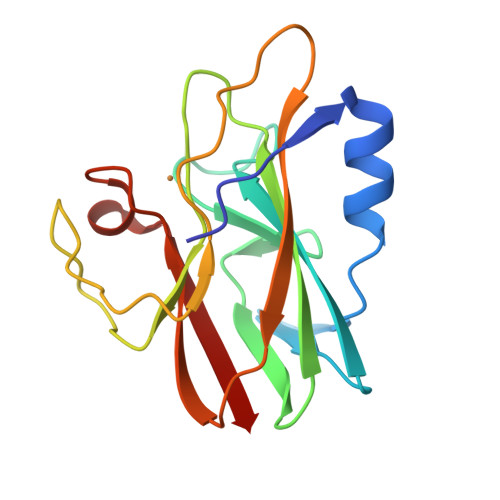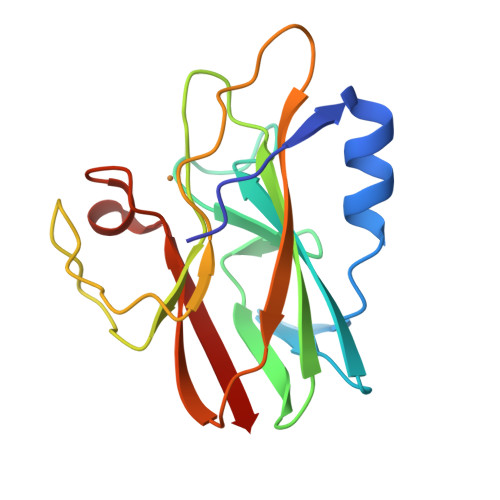Atomic Resolution Crystal Structures, Exafs, and Quantum Chemical Studies of Rusticyanin and its Two Mutants Provide Insight Into its Unusual Properties.
Barrett, M.L., Harvey, I., Sundararajan, M., Surendran, R., Hall, J.F., Ellis, M.J., Hough, M.A., Strange, R.W., Hillier, I.H., Hasnain, S.S.(2006) Biochemistry 45: 2927
- PubMed: 16503647
- DOI: https://doi.org/10.1021/bi052372w
- Primary Citation of Related Structures:
2CAK, 2CAL - PubMed Abstract:
Rusticyanin from the extremophile Thiobacillus ferrooxidans is a blue copper protein with unusually high redox potential and acid stability. We present the crystal structures of native rusticyanin and of its Cu site mutant His143Met at 1.27 and 1.10 A, respectively. The very high resolution of these structures allows a direct comparison with EXAFS data and with quantum chemical models of the oxidized and reduced forms of the proteins, based upon both isolated and embedded clusters and density functional theory (DFT) methods. We further predict the structure of the Cu(II) form of the His143Met mutant which has been experimentally inaccessible due to its very high redox potential. We also present metrical EXAFS data and quantum chemical calculations for the oxidized and reduced states of the Met148Gln mutant, this protein having the lowest redox potential of all currently characterized mutants of rusticyanin. These data offer new insights into the structural factors which affect the redox potential in this important class of proteins. Calculations successfully predict the structure and the order of redox potentials for the three proteins. The calculated redox potential of H143M ( approximately 400 mV greater than native rusticyanin) is consistent with the failure of readily available chemical oxidants to restore a Cu(II) species of this mutant. The structural and energetic effects of mutating the equatorial cysteine to serine, yet to be studied experimentally, are predicted to be considerable by our calculations.
Organizational Affiliation:
School of Health and Life Sciences, De Montfort University, The Gateway, Leicester, UK.



















